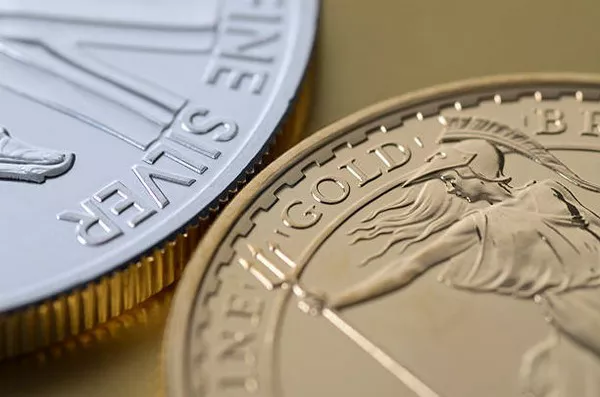In the realm of precious metals investment, silver holds a unique position due to its dual role as a valuable commodity and a sought-after asset for collectors. When considering investing in silver, one must decide between silver bullion and silver coins, each with distinct characteristics that appeal to different investor goals and strategies. This article explores the differences between silver bullion and coins, providing insights into their respective advantages, disadvantages, and suitability for various investment objectives.
Silver Bullion: A Foundation of Value
Silver bullion refers to silver bars or ingots typically produced by private mints or government mints like the Royal Canadian Mint or the United States Mint. These bars are typically composed of .999 fine silver or higher and are primarily valued for their silver content rather than their design or rarity. Here are some key considerations for investing in silver bullion:
Purity and Weight: Bullion bars come in various sizes, ranging from small fractional bars to large kilo bars, allowing investors to choose according to their budget and storage preferences. The standard purity of .999 fine silver ensures consistency in value based on the silver market price.
Lower Premiums: Silver bullion bars often carry lower premiums over the spot price of silver compared to coins. This makes them a cost-effective choice for investors primarily interested in acquiring silver at the lowest possible cost per ounce.
Ease of Storage: Due to their uniform shape and size, silver bars are relatively easy to store securely. This aspect is particularly appealing to investors looking to accumulate significant quantities of silver without occupying excessive space.
Market Liquidity: Bullion bars are highly liquid in the global market, allowing for easy buying and selling through a wide range of dealers and exchanges. This liquidity ensures that investors can convert their holdings into cash or other assets quickly when needed.
Silver Coins: Blending Value with Aesthetic Appeal
Silver coins, on the other hand, encompass a broader range of products that include legal tender coins issued by governments as well as commemorative and numismatic coins valued for their rarity and historical significance. Key factors to consider when investing in silver coins include:
Collectibility and Rarity: Many silver coins, such as American Silver Eagles or Canadian Silver Maple Leafs, are popular among collectors and investors alike due to their aesthetic appeal and limited mintages. Numismatic coins, in particular, derive additional value from factors such as age, condition, and historical significance.
Government Backing: Government-issued silver coins typically carry a face value and are considered legal tender. This backing provides investors with an added layer of security and recognition, making them a trusted store of value during economic uncertainties.
Higher Premiums: Unlike bullion bars, silver coins often command higher premiums due to their collectible value, intricate designs, and limited availability. These premiums can fluctuate based on market demand and the rarity of the coin.
Diverse Selection: Silver coins offer a wide variety of designs and themes, catering to different tastes and preferences among investors and collectors. This diversity allows individuals to build collections while simultaneously investing in precious metals.
Investment Strategies: Choosing Between Bullion and Coins
The decision between silver bullion and coins ultimately depends on an investor’s financial goals, risk tolerance, and investment horizon. Here are some strategic considerations to guide your decision:
Wealth Preservation vs. Potential Returns: If your primary goal is to preserve wealth and hedge against economic instability, silver bullion may be the preferable choice due to its lower premiums and direct correlation with the spot price of silver. On the other hand, if you seek potentially higher returns through numismatic appreciation, rare silver coins might align better with your objectives.
Diversification: Both silver bullion and coins offer diversification benefits within a well-rounded investment portfolio. Bullion provides exposure to the underlying metal’s value, while coins offer additional benefits such as aesthetic enjoyment and historical significance.
Risk Management: Investors should assess their risk tolerance when choosing between bullion and coins. While bullion offers a straightforward investment in silver’s intrinsic value, coins entail additional risks associated with collectibility, market demand, and potential price volatility.
Long-Term vs. Short-Term Investment: Silver bullion is typically favored for long-term investment strategies aimed at wealth preservation and inflation hedging. In contrast, silver coins may appeal to investors with shorter investment horizons or those seeking to capitalize on numismatic premiums over shorter periods.
See Also What Is A Silver Krugerrand Worth
Practical Considerations: Buying and Storing Silver
Whether you decide to invest in silver bullion or coins, it’s essential to consider practical aspects such as purchasing methods, storage solutions, and transaction costs:
Buying Silver: Investors can purchase silver bullion and coins from reputable dealers, online platforms, or directly from government mints. Conducting thorough research and comparing prices can help secure the best deal.
Storage Solutions: Proper storage is crucial to safeguarding your investment. Options include home safes, bank safe deposit boxes, and secure storage facilities. Factors such as security, accessibility, and insurance should inform your choice of storage method.
Transaction Costs: Be mindful of transaction fees, shipping costs, and potential taxes associated with buying and selling silver. These expenses can impact your overall investment returns and should be factored into your financial planning.
Conclusion
In conclusion, the choice between silver bullion and coins hinges on your investment objectives, risk appetite, and preference for aesthetic appeal or intrinsic value. Silver bullion offers a straightforward approach to investing in the metal’s value with lower premiums and high liquidity. In contrast, silver coins blend investment with collectibility, appealing to those interested in numismatics and historical significance.
Ultimately, a well-rounded investment strategy may involve a combination of both silver bullion and coins, leveraging their respective strengths to achieve diversification and long-term wealth preservation. By understanding the distinctions between these two forms of silver investment, investors can make informed decisions aligned with their financial goals and market outlook.


